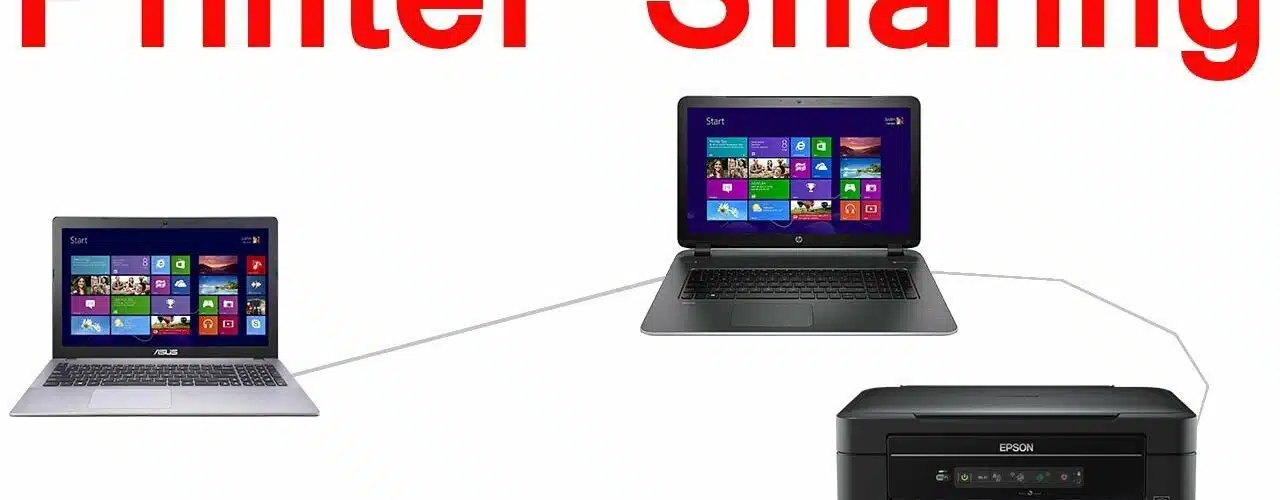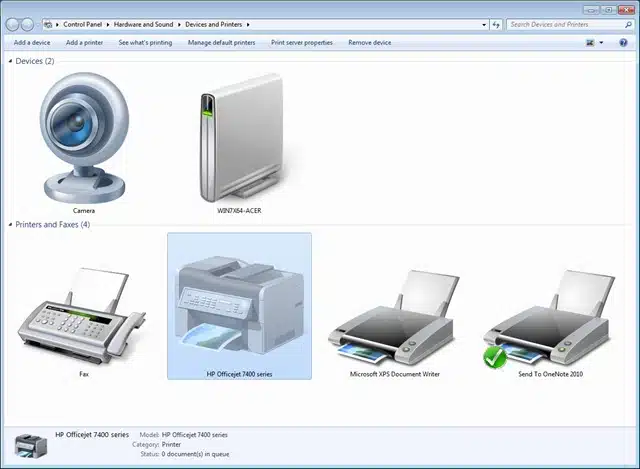Table of Contents
How to Connect Two Printers to One Computer With Windows 7?
How To Connect Two Printers To One Computer Windows 7? Printers are essential for businesses of all sizes to create hard copies of documents and images. They can also be used to scan and send faxes.
Windows 7 makes it easy to connect printers to your computer. In most cases, you can just plug the printer into a USB port and Windows will install the printer automatically.
1. Plug one printer into a USB port:
If the printer you want to share is USB-compatible, you can plug it directly into a USB port on your computer. Most computers have one or more unused USB ports, which you can use to connect printers and other devices. When you plug the printer into a USB port, Windows installs it automatically. You can also use the Add Printer Wizard to connect a USB printer to your computer manually.
If you are connecting a USB printer to a computer that runs a different version of Windows, make sure the correct driver is installed. For example, if you have a computer with a 64-bit processor and a printer that requires a 32-bit driver, you must install the 32-bit driver on the computer before you can share the printer.
Most small and medium-sized office printers have USB drivers that automatically install when you plug a cable into the device. If you have a different brand of printer, you should consult the manufacturer’s website to find instructions for installing the drivers on your computer. For example, HP has helpful support guides for its printers. You can also use the guides from Brother or Lexmark to learn how to install their printers on a PC. Once the drivers are installed, you can connect the printer to a USB port on any computer running Windows 7. Make sure that the printer is turned off when you plug it into the USB port.
2. Plug the other printer into a USB hub:
If you have two printers that you want to share between computers, the best option is to use a USB hub. USB hubs connect multiple devices to a single port, and they can be used with most computers. They can also be used with networked printers, which are connected to a router.
Connect one end of the cable from each printer to the USB hub and the other end of the cable to a computer. Plug the hub into a power source and turn it on. Once the hub is installed, all of the computers will be able to access it. This method is easy and works well for most users.
Another way to connect multiple printers to a single computer is to use a wireless USB server. These devices connect to your home network via an RJ45 Ethernet cable and can be shared by all of your computers. You can find these devices at most major retailers. They are relatively inexpensive and come with everything you need to get started.
This method is especially useful for older printers that don’t have networking capabilities built in. However, it’s not ideal for networks made up of only Windows computers, because it requires that the computer that is printing be turned on at all times. A better solution is to connect the printer to a network-enabled PC and share it using Windows Homegroup.
3. Connect the printers to the same network:
This step should be automatic if the printers are connected to a network and configured to share. Network printers typically have either a fixed IP address or can be set to automatically request an address from the network’s Dynamic Host Control Protocol, or DHCP, server. If the printers have a fixed IP address, you can determine it by connecting to the printer and checking its settings. If the printer is configured to request an address from the DHCP server, you can verify this by using a utility such as Wireless Network Watcher to scan your network for devices.
Once the printers are connected to the same network, you can install them on the computers that will use them. To install a network printer on Windows, click Start and then type “devices and printers.” Click the printer you want to add, and follow the prompts to download and install the printer driver and application.
If the computers that will be using the printer are part of a Homegroup, you should be able to skip this step. Once you join a computer to a Homegroup, the other PCs on your network will automatically connect to that device. If the other PCs aren’t part of a Homegroup, you can use the Add a Device option in Windows to connect them to the shared printer.
4. Connect the printers to the same computer:
Printers are essential for businesses to create hard copies of documents, images, and other important information. Many modern printers come equipped with networking capabilities that allow them to connect to a network and share prints across a group of computers. Using these printers over a network can be a convenient way to print multiple documents and reduce the need for snaking cables throughout an office or work area.
To share a printer over a home network, first ensure that the printer is connected to a compatible PC. Then, open the Homegroup window and select the printer from the list. When the installation wizard opens, follow the prompts to install the printer driver and application. When prompted, connect the printer to the computer and print a test page.
Alternatively, you can use a printer splitter to share two printers with one PC. Plug the splitter into a free USB port on each computer. Then, connect each printer to the splitter using a USB cable. Connect the splitter to a power source and turn it on.
If you’re not using a Homegroup, use the standard Windows sharing features to connect the printers to the same computer. To do this, open the Start menu and type “devices and printers.” Right-click on the printer you want to share and select “Printer properties.” You can then set the sharing options for your printer.






Add comment